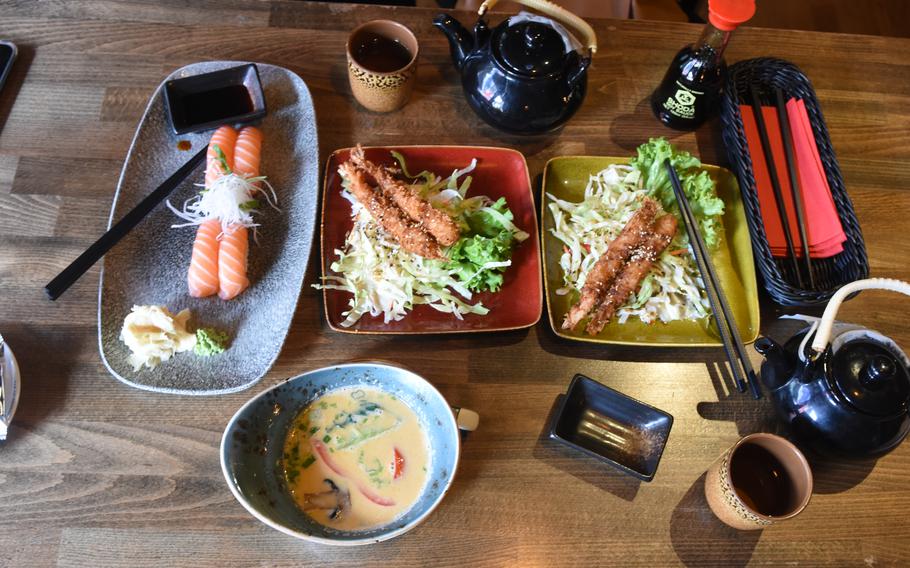
An assortment of appetizers, such as salmon nigiri and fried shrimp, set the tone for an enjoyable lunch earlier this month at Yedo, an Asian restaurant in Homburg, Germany. (Jennifer Svan/Stars and Stripes)
Sushi in the somewhat rural parts of southwest Germany is unlikely to inspire a life-changing culinary experience.
But the sushi at Yedo in Homburg is good enough, with plenty of variety to merit return visits.
The Vietnamese-owned family restaurant has two other locations, in Saarbruecken and Heilbronn. It focuses on sushi variations and Vietnamese cuisine, while inviting guests to “eat like the emperor in old Tokyo.” Yedo, often spelled Edo in English, is the former name of Japan’s capital city, Tokyo.
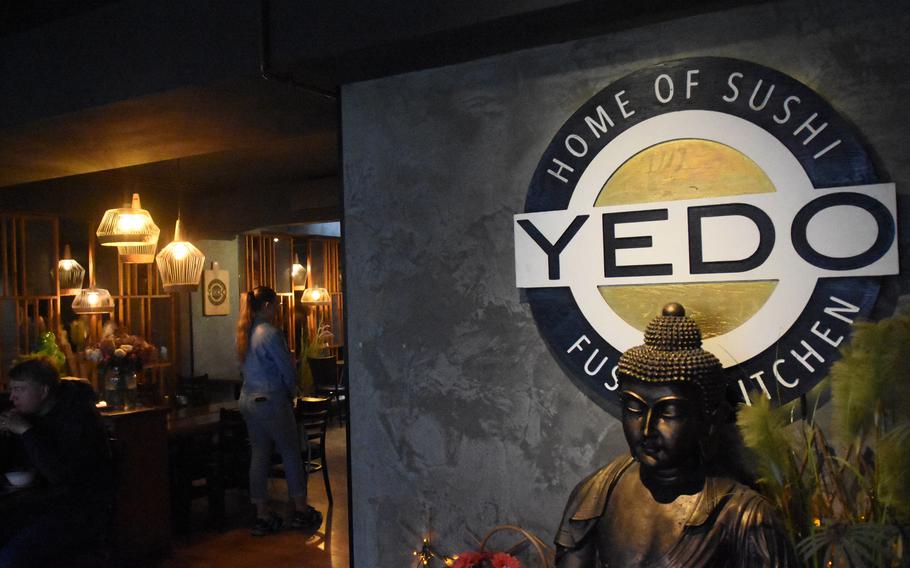
Yedo in Homburg, Germany, touts its sushi, but Vietnamese dishes are also a menu staple. (Jennifer Svan/Stars and Stripes)
Yedo carries eight sections of mainly Westernized sushi. Besides nigiri, there’s maki, futomaki, inside-out rolls, sashimi, crunchy rolls and special rolls. I counted 50 varieties on the menu.
There are a few nods to what you would find in Japan, such as the thick slices of raw tuna sashimi. But if Japanese authenticity (and the prices to match) is your primary concern, you’re best off driving to Saarbruecken and going to Hashimoto.
If you prefer to stick with Homburg or enjoy the creative rolls that have become popular in America and the West generally, Yedo has plenty of that. One roll included egg made with breaded butterfish, avocado and salmon wrapped in mayonnaise and a thin pancake.
When I ate there for lunch recently, the food passed the most basic yet important test: the fish tasted fresh and the rice was firm and sticky.
I admit I was leery about trying anything uncooked in a region where sushi still seems like more of a novelty. We’re inland, so don’t expect a wide variety of raw fish. But tuna and salmon freeze well enough to negate the region’s distance from the ocean.
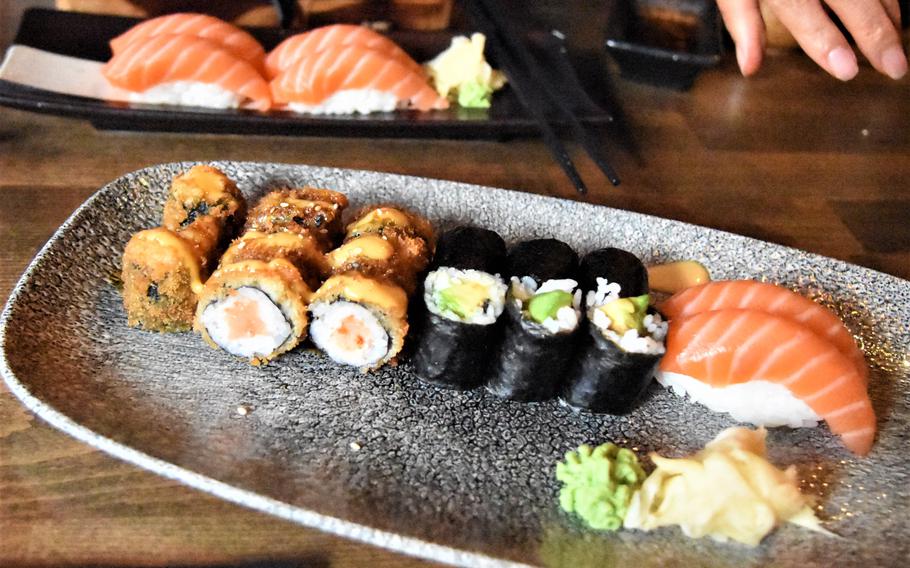
The salmon nigiri and assorted rolls at Yedo in Homburg, Germany, on May 17, 2023. (Jennifer Svan/Stars and Stripes)
And so, my friend ordered an appetizer of salmon nigiri. The bright orange, glistening slice of fish over the bed of vinegared rice reminded me of my favorite sushi in Japan.
She dipped the fish in a small bowl of soy sauce mixed with wasabi, took a bite and closed her eyes in pure delight. I couldn’t resist and let me say, I had no regrets: The nigiri melted in my mouth like butter.
After tasting the salmon nigiri, I opted for one of the lunch specials that included more of the same. It also came with avocado and seasoned sticky rice wrapped in dried seaweed, or maki, and a crunchy breaded roll with salmon and rice on the inside.
The rolls were drizzled with a sweet, brownish-yellow sauce that tasted like honey and soy sauce. You could either choose miso soup or more sushi with the plate. I chose more sushi and opted for tom kha gai, a Thai soup made with coconut milk, pieces of chicken, vegetables and lemongrass.
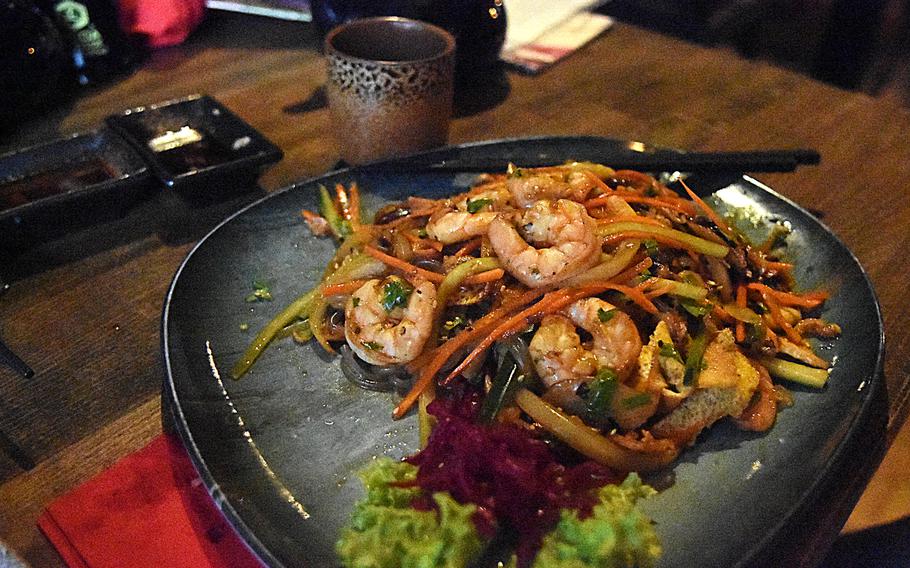
This Korean dish with glass noodles, shrimp and vegetables is sometimes served as a lunch special at Yedo in Homburg, Germany. (Jennifer Svan/Stars and Stripes)
My friend ordered a fried shrimp appetizer to go along with a cavernous bowl of pho, a Vietnamese noodle soup. Another friend ordered a different special, a Korean-style dish with shrimp, glass noodles and vegetables, including sweet potato, mushrooms, carrots, cucumber and leeks in oyster sauce.
We all agreed the sushi was the best part of the meal, though the Korean noodle dish also received high marks. The pho needed a bit more kick, said my friend, though it’s traditionally made without heat. When asking for oyster sauce, she received a small bowl of chili sauce that looked more like ketchup.
My tom kha gai was neither spicy nor sour, as it should be, and had a nice flavor.
But we all enjoyed the nigiri and maki, and would visit Yedo again to dive deeper into the vast sushi menu.
Online: yedo-sushi.de
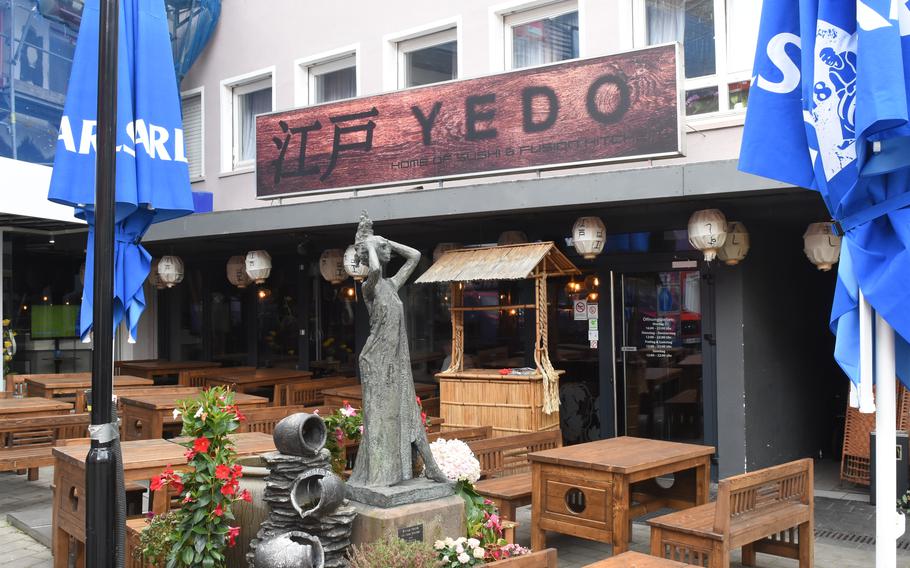
Yedo in Homburg, Germany, serves a variety of sushi as well as food from elsewhere in Asia. Outdoor and indoor seating is available. (Jennifer Svan/Stars and Stripes)